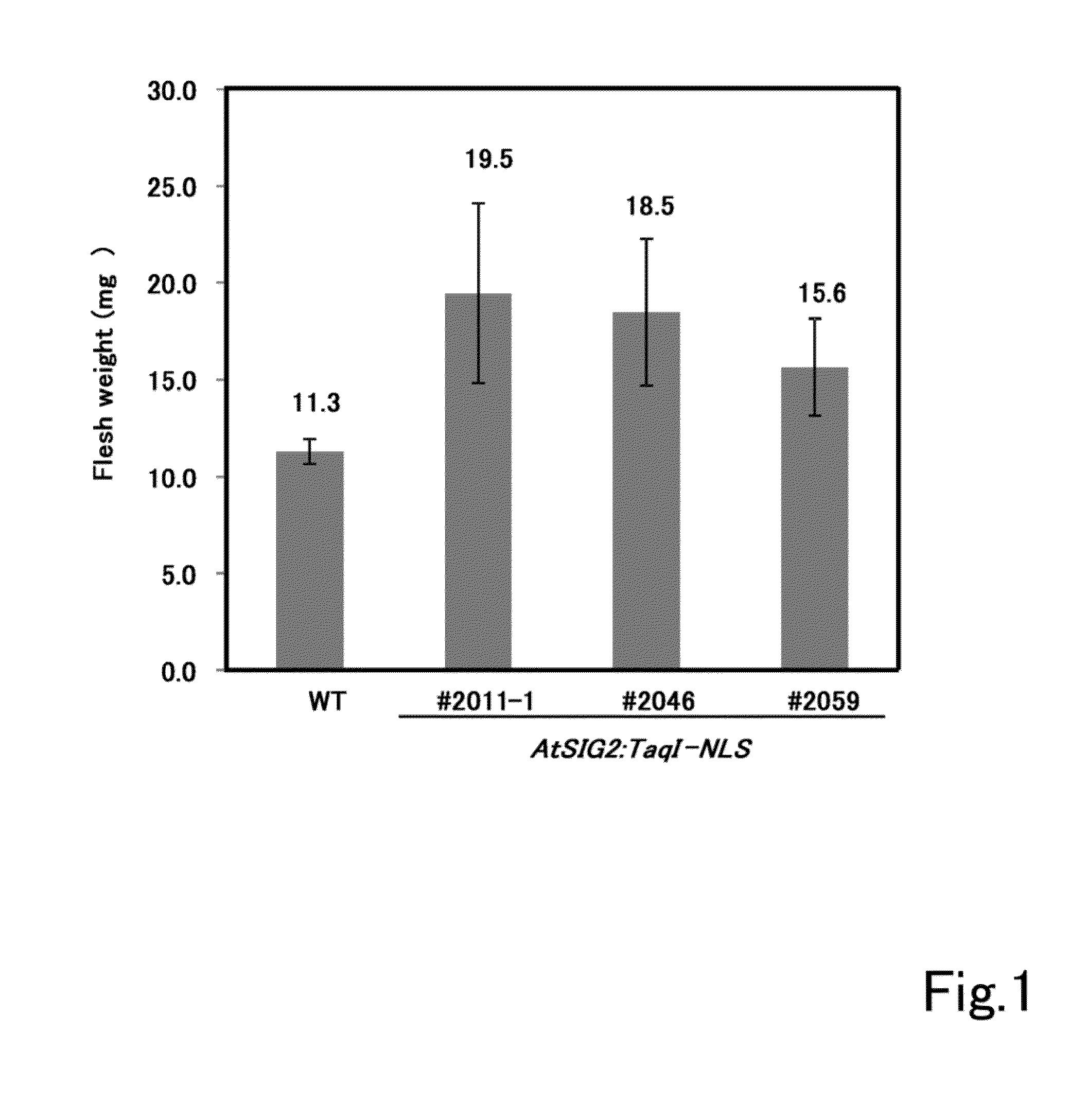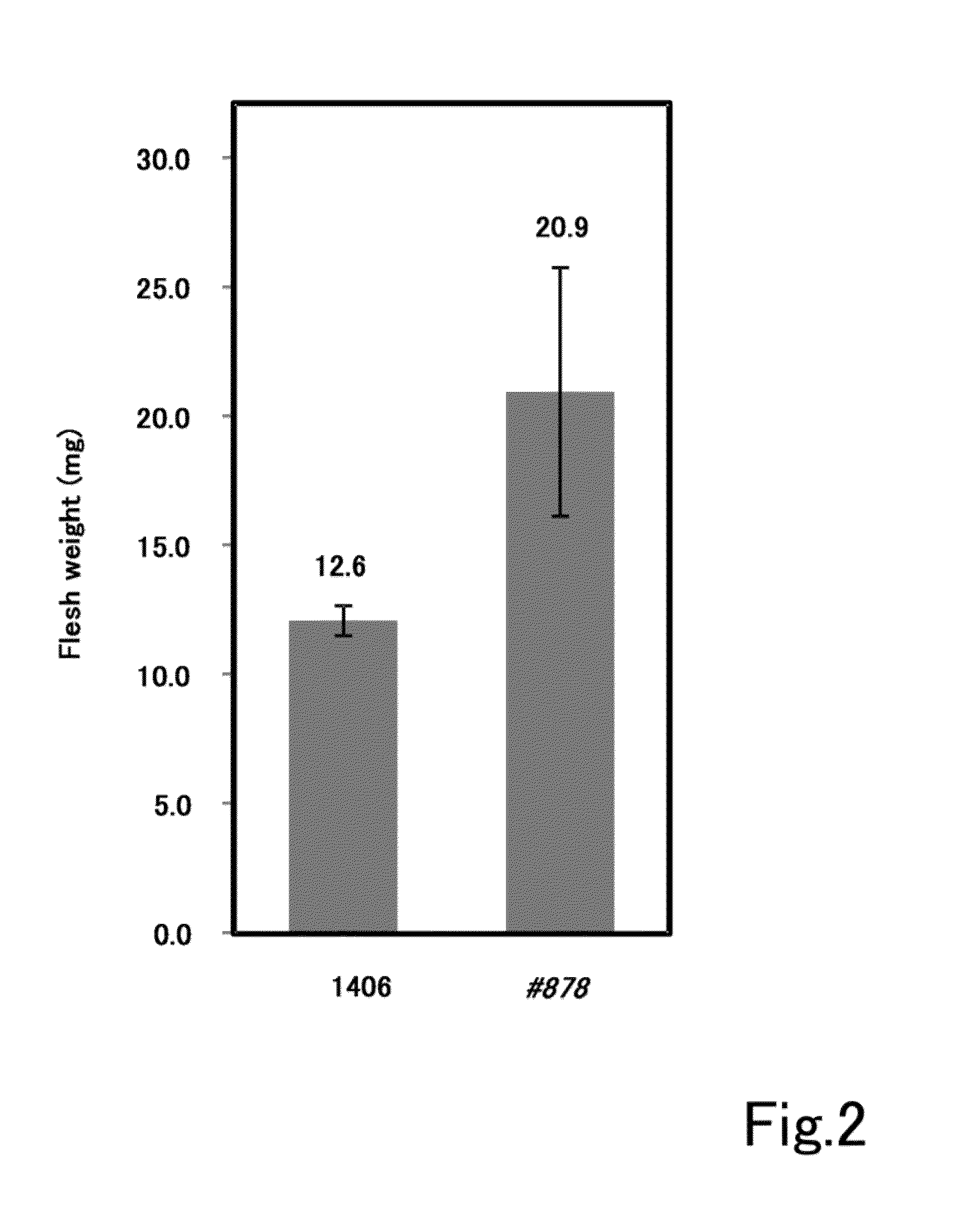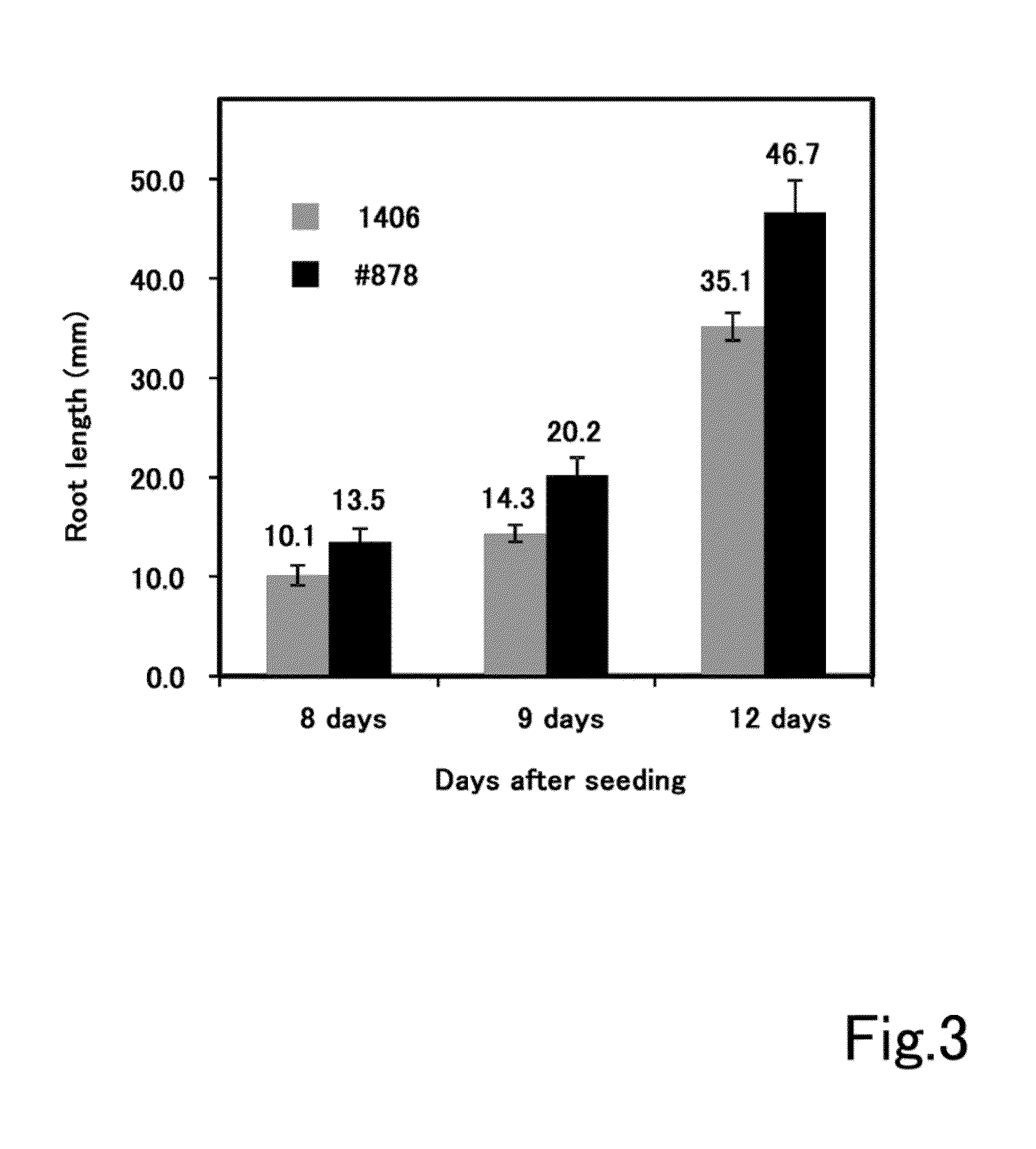Method for increasing production of plant biomass
a technology of plant biomass and endoreduplication, which is applied in the field of increasing can solve the problems of not being practicable to increase the production of plant biomass by endoreduplication, and achieve the effects of increasing ploidy, promoting double-stranded dna breakage, and increasing ploidy
- Summary
- Abstract
- Description
- Claims
- Application Information
AI Technical Summary
Benefits of technology
Problems solved by technology
Method used
Image
Examples
example 1j
Obtaining TaqI Gene
[0125]The TaqI gene was amplified by PCR using the budding yeast plasmid pHS141 (Japanese Patent No. 4158920) as the template. PCR was performed with PrimeSTAR HS DNA Polymerase (Takara Bio), using primers (BamHI-TaqI-F (SEQ ID NO:3) and TaqI-ScaI-R (SEQ ID NO:4)) having added restriction enzyme sites (BamHI, SacI). The amplified TaqI gene was subcloned to a TA-Cloning pCR2.1 vector using a TOPO TA Cloning Kit (Invitrogen).
[0126](Preparation of TaqI-NLS Gene)
[0127]A TaqI-NLS gene was prepared by PCR using the resulting TaqI gene. PCR was performed with PrimeSTAR HS DNA Polymerase using a primer (Taq-NLS-SacI-R (SEQ ID NO:5) having an added NLS sequence. The amplified TaqI-NLS gene was subcloned to a TA-Cloning pCR2.1 vector using a TOPO TA Cloning Kit (Invitrogen).
[0128](Obtaining AtSIG2 Promoter)
[0129]Young Arabidopsis thaliana leaves were frozen with liquid nitrogen and ground, and used with a DNeasy Plant Mini Kit (Qiagen) to prepare genome DNA. With the prepar...
example 2
Introduction of TaqI Gene into Arabidopsis thaliana Col-0 Wild Strain
[0138]The prepared plant expression vector pBI AtSIG2:TaqI-NLS was introduced into Arabidopsis thaliana Col-0 by the Agrobacterium method. The prepared plant expression vector pBI 35S:TaqI-NLS was also introduced into Arabidopsis thaliana 1406 by the Agrobacterium method.
[0139]Each Arabidopsis thaliana was transformed by the implanter method. Specifically, Agrobacterium-infected seeds were planted in MS agar medium (Murashige-Skoog inorganic salts, 1% sucrose, 0.05%6 MES, 0.8% Agar) containing 50 mg / l kanamycin phosphate, and grown for 2 weeks in a climate-controlled room at 22° C. with a light period of 16 hours, a dark period of 8 hours, and a light intensity of about 30 to 50 μmol / m2 / sec to implement kanamycin resistance selection whereby respective Arabidopsis thaliana transformants were obtained.
example 3
Biomass Quantity of AtSIG2:TaqI-NLS Transgenic Strain and 35S:TaqI-NLS Transgenic Strain
[0140]The resulting Arabidopsis thaliana transformant with the introduced AtSIG2:TaqI-NLS gene was hybridized to obtain strains #2011, #2046 and #2059 having the AtSIG2:TaqI-NLS gene inserted homozygously. Seeds of the #2011, #2046 and #2059 strains and the Col-09 wild strain were planted in MS agar medium, and grown for 3 weeks in a climate-controlled room at 22° C. with a light period of 16 hours, a dark period of 8 hours, and a light intensity of about 30 to 50 μmol / m2 / sec. At this stage, each plant had already developed true leaves. FIG. 1 shows the results of measurement of the biomass of 10 to 14 individual plants of each resulting strain. As shown in FIG. 1, the mean live weights of the #2011, #2046 and #2059 strains were 19.5 mg, 18.5 mg and 15.6 mg, respectively. On the other hand, the mean biomass quantity of the Col-0 wild strain was 11.3 mg. That is, the mean biomass quantities of the...
PUM
| Property | Measurement | Unit |
|---|---|---|
| Fraction | aaaaa | aaaaa |
| Electrical conductance | aaaaa | aaaaa |
Abstract
Description
Claims
Application Information
 Login to View More
Login to View More - R&D
- Intellectual Property
- Life Sciences
- Materials
- Tech Scout
- Unparalleled Data Quality
- Higher Quality Content
- 60% Fewer Hallucinations
Browse by: Latest US Patents, China's latest patents, Technical Efficacy Thesaurus, Application Domain, Technology Topic, Popular Technical Reports.
© 2025 PatSnap. All rights reserved.Legal|Privacy policy|Modern Slavery Act Transparency Statement|Sitemap|About US| Contact US: help@patsnap.com



